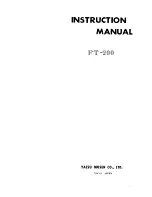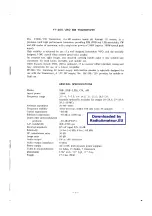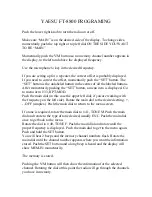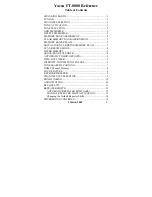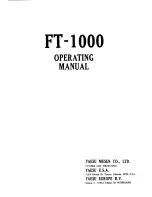
Iridium Satellite LLC
9522B L-Band Transceiver Product Information Guide
17
4.6 RF Interface
4.6.1 R F Interface Specifications
The RF interface requirements for the 9522B LBT are summarized in Table 8 below.
Table 8: General RF Parameters
Parameter
Value
Frequency Range
1616 MHz to 1626.5 MHz
Duplexing Method
TDD (Time Domain Duplex)
Oscillator Stability
± 1.5 ppm
Input/Output Impedance
50
Ω
Multiplexing Method
TDMA/FDMA
4.6.2 G P S F e e d T h r o u g h Specification
The GPS feed through connector is provided to allow an Iridium 9522B and a GPS module to share a
single antenna. When used in this way, the antenna is connected to the antenna connector, described in
3.3.2 above. Then the GPS receiver module can be connected to the GPS feed through connector output
on the 9522B. When the 9522B is powered but not transmitting, any GPS signal received on the antenna
is passed through to the GPS output. Either a passive or an active GPS module can be connected to the
9522B GPS port.
The gain from the 9522B antenna input to the GPS connector is 0dB (+/- 2dB).
The GPS output is available at all times when the 9522B is powered, except during the transmit cycle
1
.
The RF interface of the GPS feed through connector is summarized in Table 9 below.
Table 9: General RF Parameters
Parameter
Value
Frequency Range
1575 MHz
Output Impedance
50
Ω
Insertion Loss
+/-2dB
Noise Figure
≤
7dB
This should provide adequate signal for most GPS receivers because the Iridium antenna will already be
well sited. If the Iridium antenna is being shared with GPS then it is important to use an antenna with
adequate gain at 1575MHz.
1
During the transmit cycle there will be some energy at the Iridium frequency which may adversely affect
the AGC system of some GPS receivers.





















